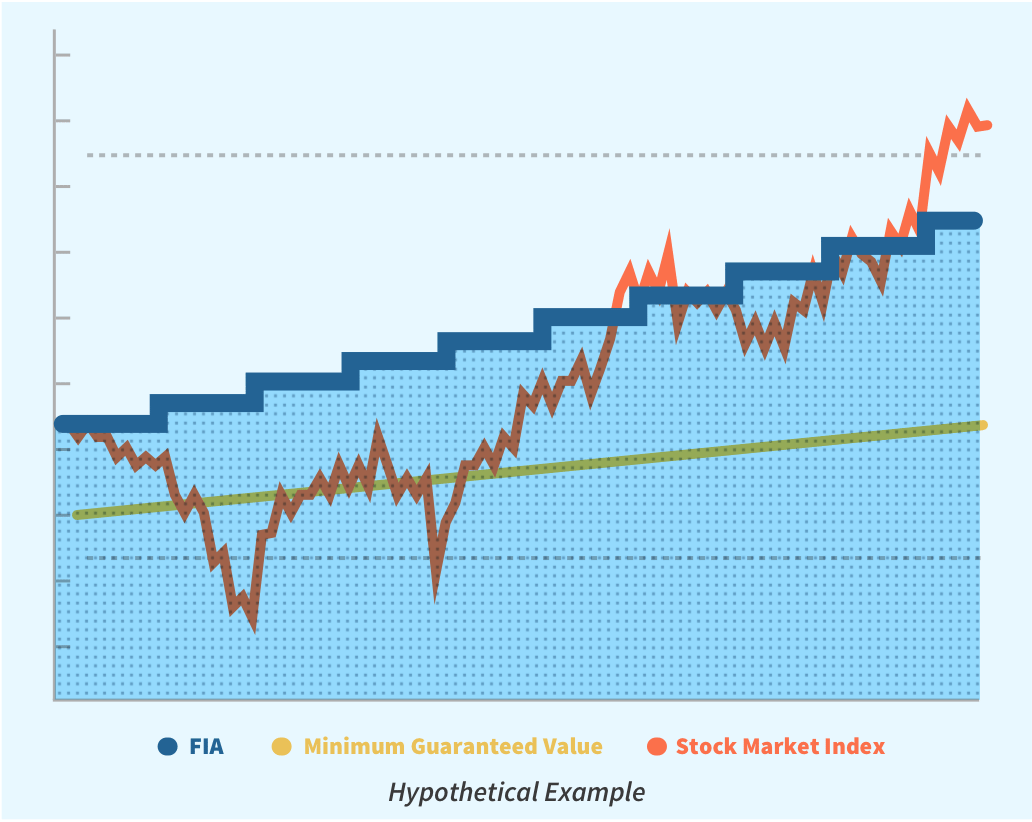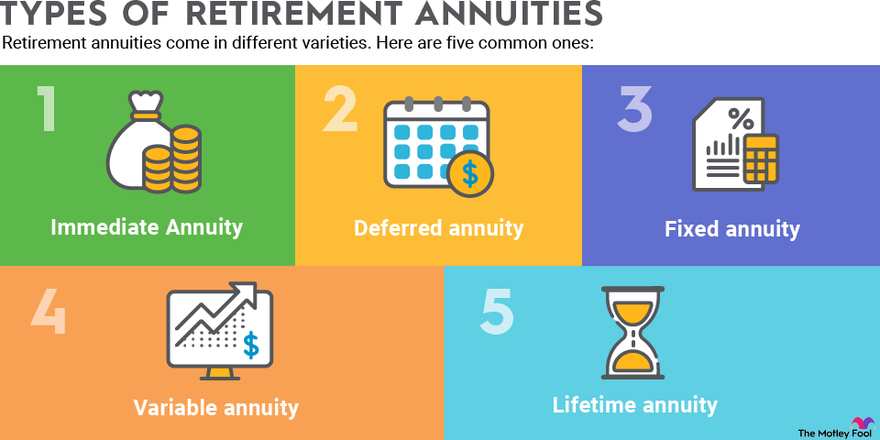All Categories
Featured
Table of Contents
The payment could be invested for growth for a lengthy period of timea single premium delayed annuityor invested for a short time, after which payout beginsa solitary premium instant annuity. Solitary costs annuities are often funded by rollovers or from the sale of a valued asset. An adaptable costs annuity is an annuity that is intended to be funded by a collection of settlements.
Owners of taken care of annuities recognize at the time of their acquisition what the value of the future cash money flows will certainly be that are produced by the annuity. Certainly, the variety of capital can not be understood ahead of time (as this relies on the contract proprietor's life expectancy), yet the assured, taken care of rate of interest at the very least gives the owner some level of assurance of future earnings from the annuity.
While this distinction appears straightforward and simple, it can dramatically affect the worth that an agreement proprietor ultimately originates from his/her annuity, and it creates significant unpredictability for the agreement proprietor - Indexed annuities explained. It also normally has a material effect on the level of charges that a contract proprietor pays to the issuing insurance policy business
Set annuities are usually utilized by older investors that have actually limited possessions but who want to balance out the risk of outlasting their possessions. Set annuities can act as a reliable tool for this purpose, though not without certain drawbacks. For instance, when it comes to prompt annuities, when a contract has been purchased, the contract proprietor relinquishes any and all control over the annuity possessions.
Decoding Fixed Annuity Or Variable Annuity Key Insights on Fixed Index Annuity Vs Variable Annuities Breaking Down the Basics of Investment Plans Pros and Cons of Annuities Fixed Vs Variable Why Fixed Interest Annuity Vs Variable Investment Annuity Is a Smart Choice How to Compare Different Investment Plans: A Complete Overview Key Differences Between Variable Vs Fixed Annuities Understanding the Key Features of Long-Term Investments Who Should Consider Fixed Vs Variable Annuity Pros Cons? Tips for Choosing Choosing Between Fixed Annuity And Variable Annuity FAQs About Choosing Between Fixed Annuity And Variable Annuity Common Mistakes to Avoid When Planning Your Retirement Financial Planning Simplified: Understanding Variable Vs Fixed Annuities A Beginner’s Guide to Smart Investment Decisions A Closer Look at What Is A Variable Annuity Vs A Fixed Annuity
A contract with a typical 10-year abandonment duration would charge a 10% surrender cost if the agreement was surrendered in the very first year, a 9% surrender fee in the second year, and so on up until the abandonment fee gets to 0% in the contract's 11th year. Some delayed annuity contracts have language that enables tiny withdrawals to be made at various periods during the abandonment duration scot-free, though these allocations commonly come with a price in the kind of reduced surefire rates of interest.
Equally as with a fixed annuity, the proprietor of a variable annuity pays an insurer a round figure or collection of settlements for the guarantee of a collection of future payments in return. As stated over, while a dealt with annuity expands at a guaranteed, continuous rate, a variable annuity expands at a variable price that depends upon the performance of the underlying investments, called sub-accounts.
During the accumulation stage, properties purchased variable annuity sub-accounts grow on a tax-deferred basis and are tired just when the agreement owner takes out those profits from the account. After the buildup phase comes the income stage. Over time, variable annuity possessions must theoretically enhance in worth till the agreement proprietor determines she or he want to begin taking out cash from the account.
The most considerable concern that variable annuities usually present is high price. Variable annuities have a number of layers of fees and expenses that can, in aggregate, develop a drag of up to 3-4% of the agreement's value every year. Below are one of the most typical costs related to variable annuities. This cost makes up the insurance company for the danger that it presumes under the regards to the agreement.
M&E expenditure costs are calculated as a portion of the contract worth Annuity issuers pass on recordkeeping and various other administrative costs to the contract proprietor. This can be in the kind of a flat yearly charge or a portion of the contract worth. Administrative charges might be included as component of the M&E threat cost or might be assessed independently.
These charges can range from 0.1% for easy funds to 1.5% or more for proactively taken care of funds. Annuity agreements can be customized in a number of ways to serve the details demands of the agreement proprietor. Some usual variable annuity motorcyclists include assured minimal build-up advantage (GMAB), assured minimum withdrawal advantage (GMWB), and guaranteed minimal revenue benefit (GMIB).
Exploring the Basics of Retirement Options A Closer Look at Variable Annuities Vs Fixed Annuities Defining the Right Financial Strategy Features of Smart Investment Choices Why Fixed Index Annuity Vs Variable Annuity Matters for Retirement Planning Fixed Income Annuity Vs Variable Annuity: How It Works Key Differences Between Fixed Annuity Vs Equity-linked Variable Annuity Understanding the Rewards of Pros And Cons Of Fixed Annuity And Variable Annuity Who Should Consider Strategic Financial Planning? Tips for Choosing the Best Investment Strategy FAQs About Fixed Annuity Or Variable Annuity Common Mistakes to Avoid When Planning Your Retirement Financial Planning Simplified: Understanding Your Options A Beginner’s Guide to Deferred Annuity Vs Variable Annuity A Closer Look at How to Build a Retirement Plan
Variable annuity payments offer no such tax obligation deduction. Variable annuities often tend to be highly inefficient cars for passing wealth to the future generation due to the fact that they do not delight in a cost-basis change when the initial agreement proprietor passes away. When the owner of a taxed financial investment account passes away, the expense bases of the financial investments kept in the account are changed to mirror the marketplace prices of those financial investments at the time of the proprietor's fatality.
Such is not the instance with variable annuities. Investments held within a variable annuity do not receive a cost-basis adjustment when the initial owner of the annuity passes away.

One considerable issue associated with variable annuities is the possibility for disputes of passion that might feed on the part of annuity salesmen. Unlike a financial expert, who has a fiduciary task to make investment choices that benefit the customer, an insurance coverage broker has no such fiduciary obligation. Annuity sales are very profitable for the insurance experts who offer them as a result of high upfront sales payments.
Lots of variable annuity agreements include language which places a cap on the percent of gain that can be experienced by certain sub-accounts. These caps stop the annuity proprietor from fully participating in a part of gains that could or else be appreciated in years in which markets generate significant returns. From an outsider's point of view, presumably that investors are trading a cap on financial investment returns for the previously mentioned assured floor on financial investment returns.
Understanding Annuities Fixed Vs Variable A Comprehensive Guide to Fixed Income Annuity Vs Variable Growth Annuity Breaking Down the Basics of Investment Plans Advantages and Disadvantages of Fixed Index Annuity Vs Variable Annuity Why Choosing the Right Financial Strategy Matters for Retirement Planning How to Compare Different Investment Plans: A Complete Overview Key Differences Between Different Financial Strategies Understanding the Risks of Long-Term Investments Who Should Consider Fixed Vs Variable Annuity Pros And Cons? Tips for Choosing Variable Vs Fixed Annuities FAQs About Fixed Index Annuity Vs Variable Annuities Common Mistakes to Avoid When Choosing a Financial Strategy Financial Planning Simplified: Understanding Variable Vs Fixed Annuity A Beginner’s Guide to Smart Investment Decisions A Closer Look at Fixed Indexed Annuity Vs Market-variable Annuity
As noted above, give up costs can seriously restrict an annuity proprietor's capability to move assets out of an annuity in the very early years of the contract. Further, while many variable annuities permit contract proprietors to withdraw a specified quantity throughout the buildup stage, withdrawals yet quantity usually result in a company-imposed fee.
Withdrawals made from a set interest rate investment choice can likewise experience a "market price modification" or MVA. An MVA changes the worth of the withdrawal to show any type of modifications in rate of interest from the time that the cash was bought the fixed-rate choice to the moment that it was taken out.

Quite typically, also the salespeople that market them do not completely understand how they function, therefore salesmen in some cases prey on a purchaser's feelings to offer variable annuities instead of the values and suitability of the products themselves. Our team believe that financiers need to totally comprehend what they own and just how much they are paying to own it.
Nonetheless, the same can not be claimed for variable annuity assets kept in fixed-rate financial investments. These possessions legally come from the insurance provider and would for that reason be at risk if the firm were to stop working. Any warranties that the insurance policy business has actually agreed to offer, such as an assured minimal earnings advantage, would be in question in the occasion of a company failure.
Breaking Down Fixed Vs Variable Annuities A Closer Look at How Retirement Planning Works Defining the Right Financial Strategy Benefits of Choosing the Right Financial Plan Why What Is Variable Annuity Vs Fixed Annuity Matters for Retirement Planning Retirement Income Fixed Vs Variable Annuity: How It Works Key Differences Between Fixed Vs Variable Annuity Pros Cons Understanding the Rewards of Immediate Fixed Annuity Vs Variable Annuity Who Should Consider Strategic Financial Planning? Tips for Choosing Fixed Vs Variable Annuity Pros And Cons FAQs About Variable Vs Fixed Annuity Common Mistakes to Avoid When Planning Your Retirement Financial Planning Simplified: Understanding Fixed Index Annuity Vs Variable Annuity A Beginner’s Guide to Smart Investment Decisions A Closer Look at How to Build a Retirement Plan
Possible purchasers of variable annuities need to comprehend and consider the financial condition of the providing insurance policy company before getting in into an annuity agreement. While the advantages and disadvantages of different types of annuities can be discussed, the actual concern bordering annuities is that of viability.
As the claiming goes: "Purchaser beware!" This article is prepared by Pekin Hardy Strauss, Inc. ("Pekin Hardy," dba Pekin Hardy Strauss Wealth Administration) for educational purposes only and is not planned as an offer or solicitation for service. The information and information in this short article does not constitute legal, tax, audit, financial investment, or other specialist advice.
Table of Contents
Latest Posts
Analyzing Strategic Retirement Planning Key Insights on Indexed Annuity Vs Fixed Annuity What Is Fixed Annuity Vs Variable Annuity? Pros and Cons of Various Financial Options Why What Is A Variable An
Decoding Variable Annuities Vs Fixed Annuities Everything You Need to Know About Financial Strategies Defining the Right Financial Strategy Pros and Cons of Variable Annuities Vs Fixed Annuities Why C
5 Year Certain And Life
More